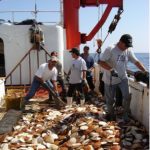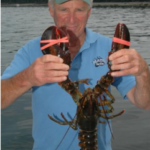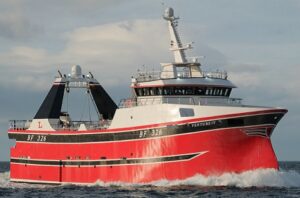Marine Monument excerpts from Press Briefing by Press Secretary Josh Earnest, 8/26/2016
11:52 A.M. EDT
MR. EARNEST: Morning, everybody. Happy Friday. Before we get started I’ll just do a — one piece of news you may have seen already. As part of the President’s commitment to protect the natural beauty of the United States, we announced today that President Obama is building on this leadership by taking an historic step in creating the world’s largest marine protected area just off the coast of Hawaii.
The designation will more than quadruple the size of the existing marine monument, permanently protecting pristine coral reefs, deep-sea marine habitats, and other important ecological features and resources in the waters of the northwest Hawaiian Islands. Altogether, President Obama has protected more public lands and waters than any other President, and has protected important marine coastal environments, spectacular natural areas renowned for their outdoor recreation opportunities they offer.
And these sights often help tell the story of significant people or extraordinary events in American history. In fact, studies have shown that every dollar we invest in our national parks generates $10 for the national economy, most of which stays in local communities. And our national parks, forests and other public lands attract visitors from all over the world, fueling local economies and supporting an estimated $646 billion-dollar national outdoor economy.
So I’m happy to take your questions on the Papahanaumokuakea National Marine Monument — (applause) — or anything else that may be on your mind today.
The various questions to follow his invitation to discuss the monument are shifted to other issues.
Then, I believe the question of the monument issue is from Pew shill Juliet Eilpren of the Washington Post.
Q And on the national monument expansion, how does the administration decide whether to expand it by 400,000 square miles, or more or less? How is that decision made?
MR. EARNEST: Well, there are a couple of factors that go into this. The first is, obviously, the President is relying on the scientific advice of officials at NOAA and other prominent government scientists who can talk about steps that the President can take, using his executive authority, to protect this valuable area. There’s also important input that we receive from local residents. When we’re talking about a marine monument like this, we’re obviously talking about people who live in the area. And obviously the native Hawaiian population views this area as quite special, if not sacred, and that’s why built into the creation of this monument are opportunities for native populations to continue to engage in the kinds of activities that are consistent with their cultural heritage.
There also is — I know that, for example, there also is an allowance that people, when they get a proper permit, that they can conduct private fishing operations in the area. I know that there’s a limit on commercial activities in this region, but people who want to fish for themselves can get a permit from the government and potentially have it approved and be able to do so.
Those are just two examples of how these kinds of designations are only enacted after robust conversation with the people who are most directly affected. And we saw that that certainly was true in Maine, when the President earlier this week designated some woodlands and waterways in Maine for special protection. There’s a lot of important work that had been done with people in local communities there to not just minimize the negative impacts on their communities but also to try to maximize the positive impact. And there is the expectation — I noted at the beginning the potential positive economic impact of these kinds of designations in the form of eco-tourism and other things.
Q And all of that protected water is U.S. federal waters?
MR. EARNEST: Yes, my understanding is all of this area is within the territorial waters of the United States of America.
Q A lot of waters.
MR. EARNEST: It is. It is.
Juliet.
Q A couple of follow-up questions on Papahanaumokuakea.
MR. EARNEST: Thank you for joining me.
Q Showoff. (Laughter.)
Q First, the President used his authority under the Antiquities Act fairly sparingly in his first term. He only did a couple of unilateral designations and they were relatively small in terms of land and water size. He’s obviously invoked it quite frequently in his second term. Can you talk about what’s propelled this shift for him to use the Antiquities Act as aggressively as he has in his second term?
MR. EARNEST: Well, I think an important part of this, Juliet, is what I was just talking to Mark about, which is that these kinds of designations are not issued on short notice. These decisions are only made after extensive consultation with local communities. I know that there were — I think this is true both in Maine and in Hawaii, that there were — this is literally the culmination of a years-long effort to protect these pristine waters in Hawaii while ensuring that the way of life of native Hawaiians is also protected. And that requires a lot of negotiation and a lot of consultation and extensive follow-up. So that would account for some of this, which is that it took years to get this going and we’re starting to enjoy the benefits of that work.
I know that there also has been a realization that there is a role for Congress to play in terms of setting aside certain territory, lands and waters in the United States for future preservation, but we haven’t seen a lot of congressional activity of any sort, really, over the last few years. And it has turned the President’s attention to more robust use of executive action.
The President, I think in each of these cases, would be happy to sign into law a piece of legislation that would have protected these waters. But we haven’t seen that kind of legislative activity in this Congress, and it means the President has had to make more effective use of his executive authority, and that’s what he’s done, in a way that will benefit not just people in Hawaii, but the American people for generations to come.
Q And then more broadly on marine monuments, a lot of scientists have talked about the importance of protecting areas closer to the continental United States — in New England, in the Southeast, in the Gulf. These are proposals, again, that have been around for years but often tend to be controversial because they’re close to major population centers. Can you talk about why up to this point the White House has focused on relatively remote areas in the Pacific as opposed to some of these other areas, which many scientists consider just as ecologically valuable?
MR. EARNEST: Well, look, I’m not going to rule out future decisions over the next five months or so. I think the thing that you can assume, Juliet, is that given the extensive consultation that I described over a large but remote stretch of water off the coast of Hawaii would engender more and more vigorous discussion when we’re talking about waters that are closer to larger population centers.
And again, I think it’s further evidence that the Obama administration takes quite seriously the responsibility that we have to carefully consider the impact of these decisions on local populations and on local communities. And when done right, the impact of these designations is positive, both when it comes to economic questions, but also when it comes to questions about quality of life. And we’re committed to trying to advance both those things in communities all across the country.
Chris.








































